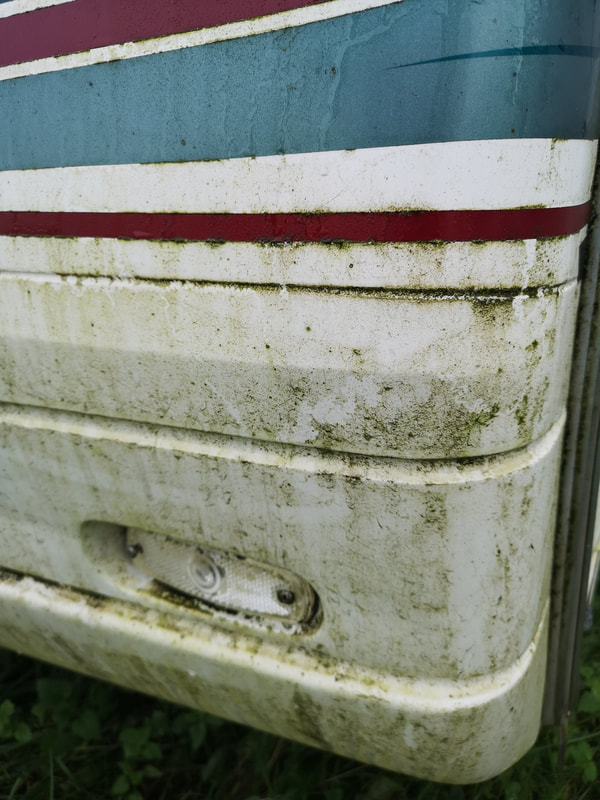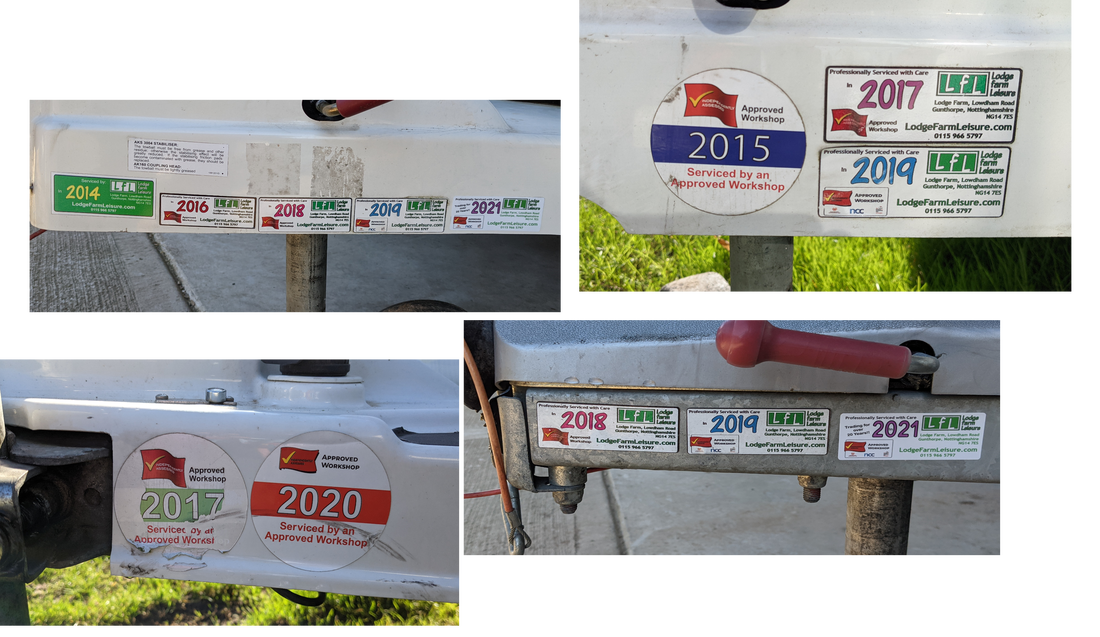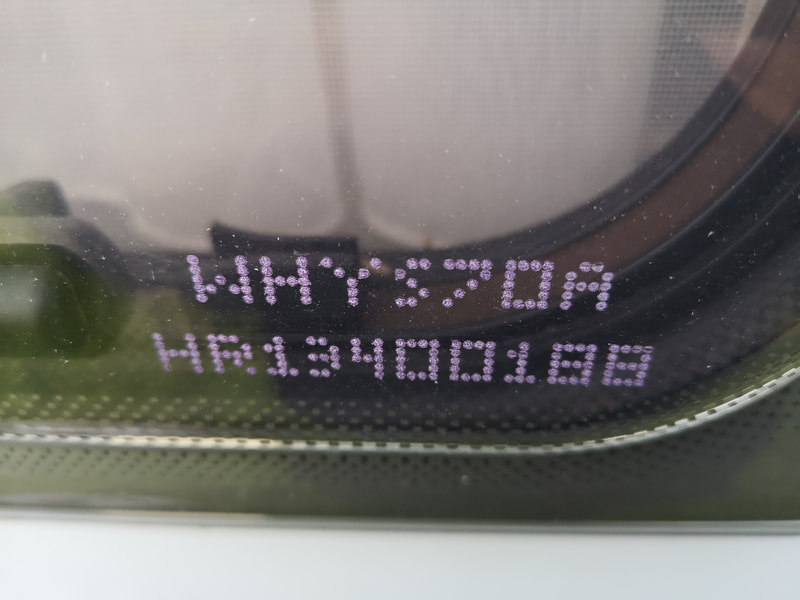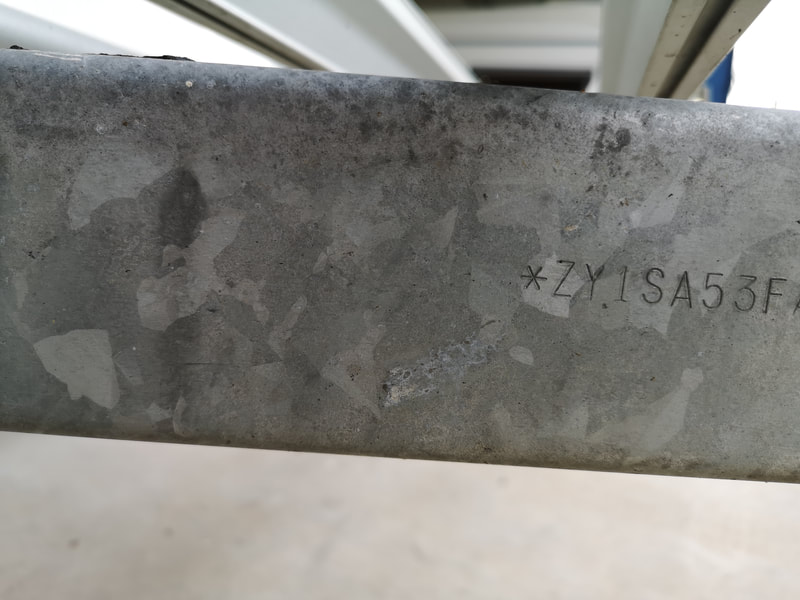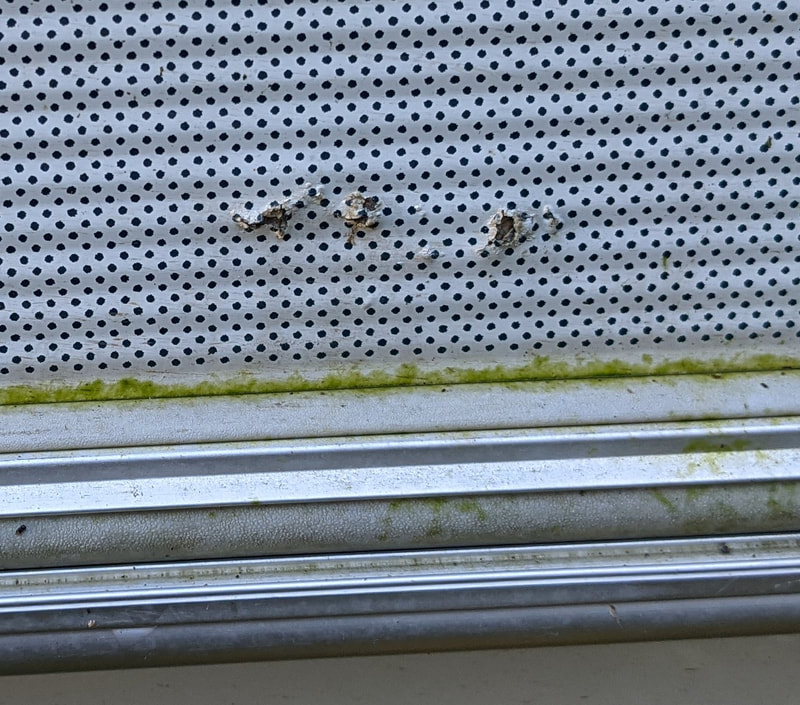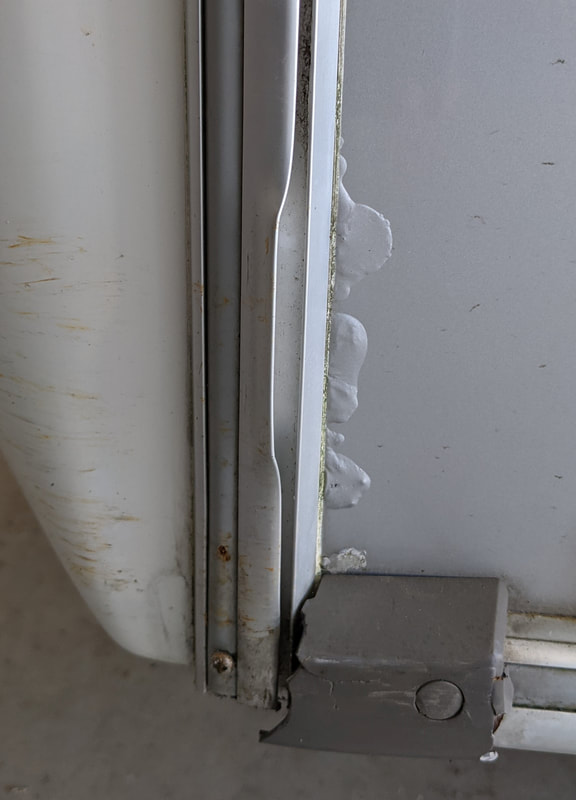The most important issue in second-hand vans is damp. We see so many customers every year who have bought a motorhome or caravan via the internet; often travelled miles to collect it, and then when they bring it into us for a service, we have to inform them that the vehicle is too wet to warrant the cost of repair.
Checking for moisture is simple with a damp meter. These are available to buy on ebay for as little as £10. Other tricks are to look behind curtains, look in all the cupboards, plus just feeling the walls can give you an idea if there are any hidden problems. We can complete a damp test on a vehicle, which we charge at £48. This service can be booked through our website at:
https://checkappointments.com/book/lodgefarmleisure
We can then advise customers on any damp issues and what can be done to improve or eradicate the problems.
A service record is helpful to have as it guarantees that the van has been cared for.
It should really have been serviced in the last 12 months, otherwise we would not recommend towing the vehicle. Owners do not always keep any paperwork, but many companies attach stickers to the hitch indicating when a service has been completed.(see photographs below). Although it is not necessary for a service to be done every year, we would advise that a service done recently is a good sign, and proof of several services indicate that it has been cared for. Having the NCC approved workshop logo on the sticker is also a guarantee of the quality of work done. Below are some examples of service stickers.
Checking for moisture is simple with a damp meter. These are available to buy on ebay for as little as £10. Other tricks are to look behind curtains, look in all the cupboards, plus just feeling the walls can give you an idea if there are any hidden problems. We can complete a damp test on a vehicle, which we charge at £48. This service can be booked through our website at:
https://checkappointments.com/book/lodgefarmleisure
We can then advise customers on any damp issues and what can be done to improve or eradicate the problems.
A service record is helpful to have as it guarantees that the van has been cared for.
It should really have been serviced in the last 12 months, otherwise we would not recommend towing the vehicle. Owners do not always keep any paperwork, but many companies attach stickers to the hitch indicating when a service has been completed.(see photographs below). Although it is not necessary for a service to be done every year, we would advise that a service done recently is a good sign, and proof of several services indicate that it has been cared for. Having the NCC approved workshop logo on the sticker is also a guarantee of the quality of work done. Below are some examples of service stickers.
The specifications of vans are at
https://www.caravantalk.co.uk/caravan-specifications/
which will help with confirming that the vehicle is complete and correct.
https://www.caravantalk.co.uk/caravan-specifications/
which will help with confirming that the vehicle is complete and correct.
All vans, since 1992, should all have a VIN (Vehicle Identification Number) in the corner of the windows. Ensure that the numbers have not been tampered with. Extra dots could have been added, or the entire text could have been polished off.
The number is also engraved into the side or top of the A-frame
(but often underneath the plastic cover).
If a window has no number, it is either a brand new window which has been replaced; the vehicle is older than 1992, or it has been rubbed off. The tenth digit is always the year of registration, which is not always the year of manufacturer. Caravans can be built, stored and then registered. 1992 is depicted by an N, 1993 is P, 1994 is R, 1995 is S, 1996 is T, 1997 is V, 1998 is W, 1999 is X and 2000 is Y. Then it became numbers. 2001 is 1, 2002 is 2, all the way up to 2009. Then back to letters with 2010 as A, 2011 as B, etc. The first three digits depict the manufacturer.
You can ring CRiS, the National Register of UK touring caravan keepers,
to check about outstanding payments, etc. but there will be a charge.
If the van is dirty, it could be hiding something.
Although the layout and inside is the most important for customers,
always walk round the outside and inspect it carefully for cracks, dents, etc, and check the roof!
When you are inspecting the exterior of the van, look low down along the body for aluminium degradation.
This looks like blistering in the metal face. It is usually caused by water behind it, rotting it out.
The photos below illustrate what this can look like.
The number is also engraved into the side or top of the A-frame
(but often underneath the plastic cover).
If a window has no number, it is either a brand new window which has been replaced; the vehicle is older than 1992, or it has been rubbed off. The tenth digit is always the year of registration, which is not always the year of manufacturer. Caravans can be built, stored and then registered. 1992 is depicted by an N, 1993 is P, 1994 is R, 1995 is S, 1996 is T, 1997 is V, 1998 is W, 1999 is X and 2000 is Y. Then it became numbers. 2001 is 1, 2002 is 2, all the way up to 2009. Then back to letters with 2010 as A, 2011 as B, etc. The first three digits depict the manufacturer.
You can ring CRiS, the National Register of UK touring caravan keepers,
to check about outstanding payments, etc. but there will be a charge.
If the van is dirty, it could be hiding something.
Although the layout and inside is the most important for customers,
always walk round the outside and inspect it carefully for cracks, dents, etc, and check the roof!
When you are inspecting the exterior of the van, look low down along the body for aluminium degradation.
This looks like blistering in the metal face. It is usually caused by water behind it, rotting it out.
The photos below illustrate what this can look like.
Always have a look at the state of the tyres and their age. For more detailed information about tyres, check out the page at:
https://www.lodgefarmleisure.com/tyres-part-2.html
Checking your towing weight is also important. The weight of the van is engraved on the plate, close to the door. Foreign vans will have their weights marked on the other side, or on the bulkhead (in the gas locker). For novices, a website worth looking at is
https://www.outandaboutlive.co.uk/caravans/towmatch/
Try to get an idea of the value of the van you are looking at by checking out the completed sales of that particular vehicle online. If you are a member of
The Motorhome and Caravan Club it is worth giving them a ring to see if they will give you an idea of the van’s value.
Finally, if it seems too good to be true, there is something wrong with the van.
https://www.lodgefarmleisure.com/tyres-part-2.html
Checking your towing weight is also important. The weight of the van is engraved on the plate, close to the door. Foreign vans will have their weights marked on the other side, or on the bulkhead (in the gas locker). For novices, a website worth looking at is
https://www.outandaboutlive.co.uk/caravans/towmatch/
Try to get an idea of the value of the van you are looking at by checking out the completed sales of that particular vehicle online. If you are a member of
The Motorhome and Caravan Club it is worth giving them a ring to see if they will give you an idea of the van’s value.
Finally, if it seems too good to be true, there is something wrong with the van.
|
Lodge Farm, Lowdham Road
Gunthorpe, Nottingham Nottinghamshire. NG14 7ES |
OPENING HOURS
MON-SAT 10:00-17:30 SUNDAY 10:30-16:30 |
Telephone 0115 966 5797
Fax 0871 971 1044 |

